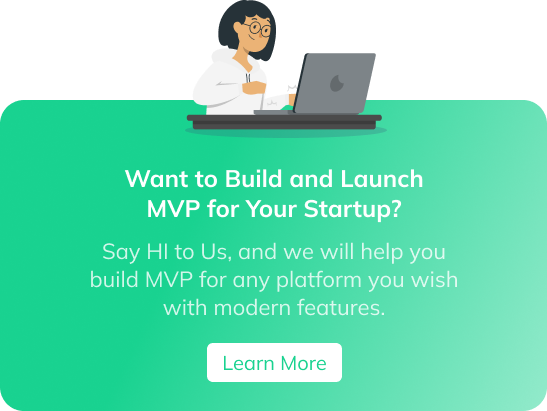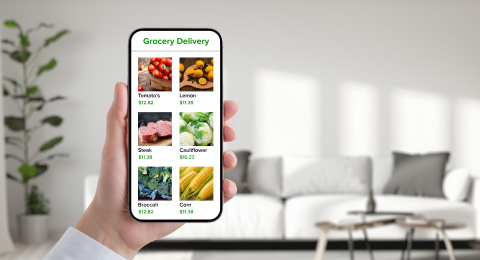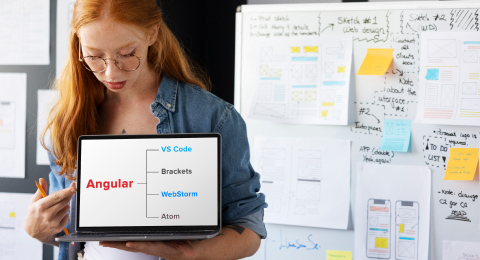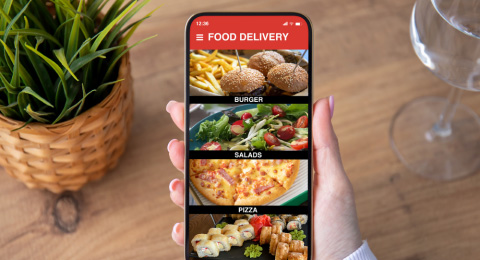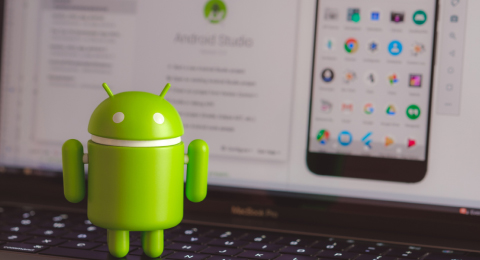
Heading toward digitization, people are surrounded by connected devices, and entrepreneurs are taking advantage of this era and dreaming of launching digital product that helps their businesses to reach a maximum height. Indeed, the word “startup” has created a buzz in the business fraternity, and what can be a better tool than mobile app development that bring services to end-users? But before developing a full-fledged application, MVP app development helps entrepreneurs to analyze and optimize their investment in the market.
Since their offers are based only on their own presumptions, and they ignore the user acceptance and reaction to such a platform, many startups fail or do not achieve the heights they had hoped for. Do you know that 20% of startups fail during the first year of operation?
There are many causes for this, including poor product-market fit, ineffective marketing strategies, and money-related issues. But is there a method to lessen dangers before taking off?
A minimum viable product is indeed one of the secrets to your success. The MVP concept is somewhat ambiguous when used in a broader sense because, while the MVP in app development is generally helpful, it also necessitates judgmental thought within a minimum and maximum gradations. In this post, you will learn how to build an MVP along with:
- What is the MVP development process?
- Why is MVP important for entrepreneurs?
- A step-by-step guide to building an MVP
- Top successful examples
Without wasting your time, let us answer all these questions in detail.
What is MVP App Development?
A Minimum Viable Product (MVP) is a product that enables you to test your solution to the primary problem using the fewest possible features. It is targeted at a limited segment of the market (early adopters).
The idea of a Minimum Viable Product (MVP), which emerged in the startup community, is increasingly applied by businesses of all sizes to test out new products.
One of the first people to bring it to the general public was Eric Ries from LeanStartup. He observes that MVP app development aims to produce a product with its most fundamental features and give it to evangelists and early adopters in exchange for feedback.
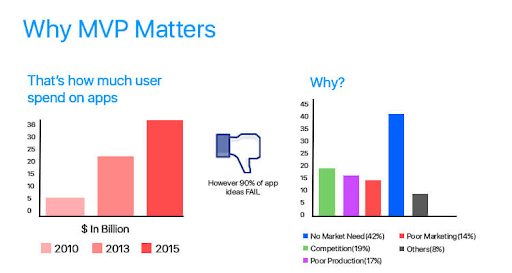
Source: Chromeinfo Technologies
The aim of creating an MVP is:
- To test a product hypothesis with the least amount of resources possible.
- Accelerate learning, and collect early adopters’ comments.
- By only developing features that are in response to genuine feedback from early adopters, you can cut down on unnecessary development hours.
- Deliver the product to early buyers as quickly as you can.
- Build your brand swiftly if it’s a fresh startup.
It only makes sense to put all your effort into creating an app that offers a seamless user experience because nobody enjoys a bloated product, least of all its consumers. But how far along in growth must you be to be certain that it is sufficient?
Where do you draw the line, and how can you be confident that the money spent on app development won’t be for anything?
Surprisingly, the answers to the questions above are straightforward. First, you start with an MVP strategy! Now, you know the meaning of MVP but need to be aware of its benefits to entrepreneurs. So let’s learn what benefits businesses get from MVP app development.
What Sort of Privilege does MVP Brings to Businesses?
A minimum viable product acts as a safety net and aids in predicting the product’s technical and commercial potential once it is in the customer’s hands. Making technical and business decisions based on evidence rather than conjecture is now possible thanks to the MVP approach.
The creation of an MVP starts with product testing in the target market. Make sure there is a huge difference between prototyping and MVP. MVPs can lessen a team’s level of uncertainty. By producing a product that mimics the final product and making it available to users, a project team can predict the demand for planned software. Let’s look at some advantages that MVP brings to the business.
Clear Vision
The biggest advantage of creating an MVP app development is that it provides you with a clear path and direction. In addition, it enables you to ascertain whether there is a genuine need for your app or whether it is just another one that serves the same purpose as those presently on the market.
You can accurately ascertain what your app consumers like after asking them what they want to see in the app. Your service may give you fast feedback on how customers utilize it when you simplify it.
Establish Early Relations with Customers
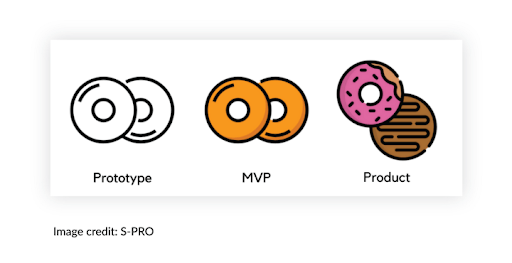
The right timing is crucial in business. At the beginning of the development process, involving new consumers and stakeholders is beneficial. Early adopters will promote your product and provide invaluable feedback. What could be better to make your product completely customer-focused?
Minimal Risk
It’s risky to implement a large-scale application development procedure. The market, the economy, or a trend all have the potential to shift. Launching simple apps with useful features and adding new ones over time enables flexibility and the efficient use of resources in the continually evolving application industry.
Going in tiny iterations will save you a lot of work if you need to change the application over the course of a few months or years, adding or removing functionality. One of the advantages of using an MVP for your startup is reducing risks to a minimum.
Easy to Add New Features
Developers can incrementally add additional functionality once the MVP has been released. In addition, the expense of having to redesign some aspects is low. The fewer features your product has, the fewer you may need to modify or eliminate. Furthermore, there is significantly less chance for defects to arise when developers add new features to an MVP.
How to Build an MVP? Step-by-Step Guide
You must devote enough time to product planning to produce a profitable product. First, be sure to adhere to the fundamental MVP app development ideas and procedures. They must be followed throughout the procedure by the team. While doing so, make an attempt to spend as little money and time as you can.
There are various stages in the MVP process, from idea testing to product development. Let’s look more closely at each of them.
Conduct Research on the Needs of End-users
Business organizations must first focus on their client’s needs when working with skilled app developers. The first step is market research to determine which app features should be included. It can take a lot of time to conduct surveys.
Therefore, innovative teams come up with special concepts and tailored features. In contrast to what their rivals are doing, this clearly identifies their profile. Experienced app developers advise companies to engage with their clients and identify any issue they can resolve for them.
Think about Uber’s business model, for instance. In order to address the issue of traffic congestion and the problem of waiting for autos on the roads, the company worked with the MVP developers and developed an app with basic features. Understanding the user’s issue streamlines your road to success and helps you focus on core goals.
Choose Core Features
People only ever use an app for one purpose, so start setting priorities. Make a list of the features you’d like to see in your MVP based on a user flow diagram. Get this list as short as possible using any prioritization strategy you choose (think of the MoSCoW – must, should, could, won’t have – way). The version you receive should have the fundamental components of the user flow.
Map Out the User Flow
This step is part of the app design process, and we must work hard to ensure that the application is designed so that end users can continue to find it handy.
Starting with the login screen and continuing through the final step, such as making an online payment or committing to a significant transaction, we must examine and evaluate the program from the end user’s point of view.
The User Flow is something that must be kept in mind because it is crucial and must never be overlooked.
Validate and Test Your MVP
Validate your MVP app before releasing it to the public. The simplest solution is to frequently ask friends and family. As an alternative, you can work with user-testing businesses. Finally, continue to gather early adopter input once your MVP has gone live.
Successful Apps that Started Like MVPs
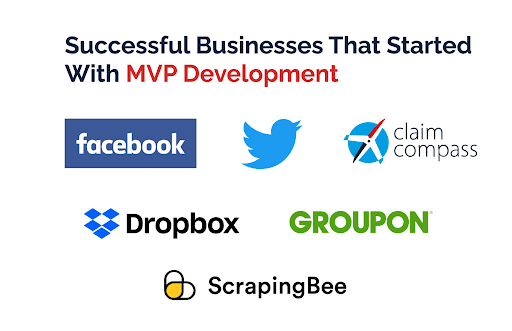
Source: Keen Ethics
Let’s move on to popular examples of minimal viable products. Of course, any startup must first validate its business concept, so you cannot skip the MVP development stage. We’ve gathered tales of a few popular companies that began as MVPs but now dominate the global market.
Facebook MVP
The sole function of Facebook’s MVP, or Thefacebook as it was originally known, was to link students via their college or class and allow them to post messages to their boards.
Friends Reunited and other social networks had the concept first, but Facebook’s straightforward approach and the momentum it gained as it spread among college graduates proved irresistible. This made it possible for practically all of the features to build on that accomplishment.
Airbnb
Air mattresses and a bed and breakfast were the foundation of Airbnb. However, two product designers, Joe Gebbia and Brian Chesky, had financial difficulties renting out an additional room in their San Francisco residence in 2007.
With the help of their home, they developed a room-exchanging platform’s minimal viable product and built an $85 million business.
Dropbox
When Drew Houston came up with the concept for Dropbox in 2007, he shared the full product. Instead, he merely made a short movie explaining some of his product’s fundamental features and functions.
His target audience was quite small, with only a few early users of technology, and it was just a straightforward movie on the Digg platform.
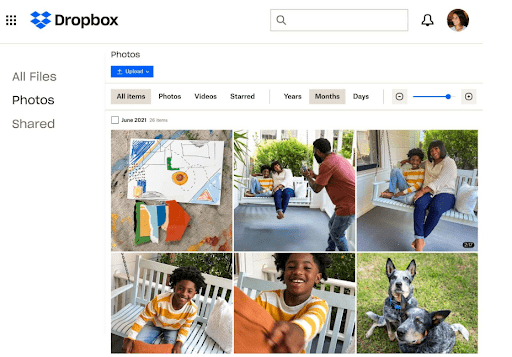
Source: Dropbox
You won’t believe it, but he was able to raise beta sign-up from 5000 to an amazing 75000 overnight with the aid of this simple video.
Ready to Build your MVP?
When you come up with a groundbreaking app idea, it’s simple to become ecstatic. Building an MVP app development seems to be worthwhile before you begin full-scale development, though. You will save a tonne of time and work, have the chance to gather customer input, and assess product-market fit by developing a minimal version of your product. In addition, you’ll be able to validate your app idea and attract investment.
When looking for the right MVP development company for your application or service, it is essential to shake hands with a company that knows how to implement things efficiently. We, Elluminati Inc, are a mobile app development company ready to help businesses in all aspects to build a fully advanced solution.

